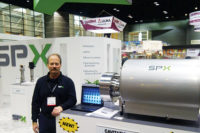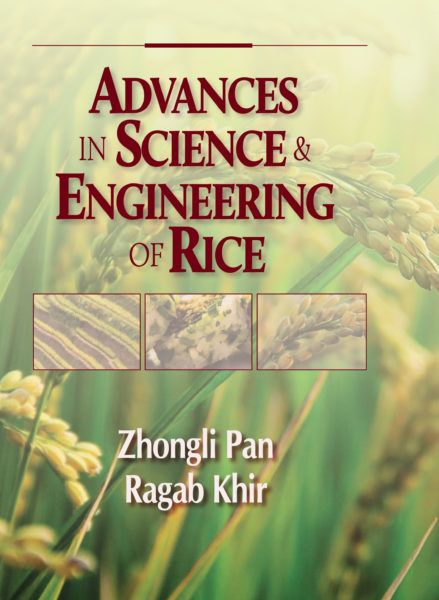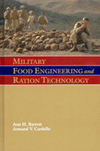Engineering R&D: Not your run of the mill rice
The most nutritious portion of a kernel of rice is discarded during milling. A California processor is trying to make a business case for the byproduct by partnering with humanitarian aid groups.

When the ancient kingdoms of Southeast Asians discovered how to polish rice, the tasty new food product was a luxury only the wealthy could afford. Peasants continued to subsist on cracked rice, while the aristocracy feasted on the new dish. Before long, the seemingly well-fed nobility started dying off at an alarming rate. The cause was identified as malnutrition: by polishing away the kernel's nutritional layers, noblemen were left with a dietary mainstay bereft of the vitamins, fats and proteins needed to sustain life.
Diet diversity prevents modern man from suffering the same fate. Still, the best parts of the rice grain continue to be discarded. Nutritional companies are trying to change that with a variety of supplements derived from rice bran, provided the bran can be stabilized. Engineer Dan McPeak developed a proprietary extrusion process to stabilize bran and, in 1989, founded RiceX. Last year, RiceX was folded into NutraCea, a specialty-products company founded by his wife, Patty McPeak. To complement the specialty products marketed by the firm and generate new cash flow, NutraCea is expanding the market for stabilized rice derivatives by partnering with humanitarian and government agencies to supply nutritional beverages in the Caribbean and Latin America. A $21.6 million joint venture with a company in the Dominican Republic last fall followed smaller deals in Guatemala, El Salvador, Jamaica and Trinidad. Malnourished children and pregnant and lactating women are the early beneficiaries, though NutraCea officials hope these demonstrations of the nutritional value and efficacy of stabilized rice bran derivatives will help create a larger market for the chafe of rice milling.
Helping to coordinate production and the outreach program is Ike E. Lynch, NutraCea's chief operating officer. A 40-year veteran of the food industry, Lynch launched Centennial Foods Inc., a copacker of organic baby food and grain-based products, in 1989. The firm was an early licensee of Oatrim, a fat replacer made from grain byproducts and developed by George E. Inglett, a research scientist with USDA's Agricultural Research Service in Peoria, IL. Centennial Foods was acquired in 1997 by RiceX, which was a captive supplier of stabilized rice bran to NutraCea. The two-phase process of bran stabilization and separation of nutritional derivatives now are under one umbrella.
 FE: Why is rice bran wasted in the milling process?
FE: Why is rice bran wasted in the milling process?
Lynch: Once the bran is polished away from the kernel, the oil in the germ comes into contact with naturally occurring lipase enzyme and begins to oxidize, forming free fatty acids. Free fatty acids are around 2 percent when the grain is milled; within a few hours, levels rise above 5 percent, rendering it useless: it won't pass the smell test. We use a pneumatic system to immediately deliver the bran byproduct to our facility adjacent to the mill. We then stabilize the rice brand by processing it through an extruder to deactivate the lipase enzyme and sterilize the microbial load.
Worldwide, we estimate 60 million metric tons of rice bran is wasted every year. Some of it becomes animal feed; some is burned in boilers as fuel. Most of the rest goes back to the soil as land applied fertilizer.
FE: Temperature spikes of 100

Ike E. Lynch, chief operating officer, NutraCea, El Dorado Hills, CA.
When the ancient kingdoms of Southeast Asians discovered how to polish rice, the tasty new food product was a luxury only the wealthy could afford. Peasants continued to subsist on cracked rice, while the aristocracy feasted on the new dish. Before long, the seemingly well-fed nobility started dying off at an alarming rate. The cause was identified as malnutrition: by polishing away the kernel's nutritional layers, noblemen were left with a dietary mainstay bereft of the vitamins, fats and proteins needed to sustain life.
Diet diversity prevents modern man from suffering the same fate. Still, the best parts of the rice grain continue to be discarded. Nutritional companies are trying to change that with a variety of supplements derived from rice bran, provided the bran can be stabilized. Engineer Dan McPeak developed a proprietary extrusion process to stabilize bran and, in 1989, founded RiceX. Last year, RiceX was folded into NutraCea, a specialty-products company founded by his wife, Patty McPeak. To complement the specialty products marketed by the firm and generate new cash flow, NutraCea is expanding the market for stabilized rice derivatives by partnering with humanitarian and government agencies to supply nutritional beverages in the Caribbean and Latin America. A $21.6 million joint venture with a company in the Dominican Republic last fall followed smaller deals in Guatemala, El Salvador, Jamaica and Trinidad. Malnourished children and pregnant and lactating women are the early beneficiaries, though NutraCea officials hope these demonstrations of the nutritional value and efficacy of stabilized rice bran derivatives will help create a larger market for the chafe of rice milling.
Helping to coordinate production and the outreach program is Ike E. Lynch, NutraCea's chief operating officer. A 40-year veteran of the food industry, Lynch launched Centennial Foods Inc., a copacker of organic baby food and grain-based products, in 1989. The firm was an early licensee of Oatrim, a fat replacer made from grain byproducts and developed by George E. Inglett, a research scientist with USDA's Agricultural Research Service in Peoria, IL. Centennial Foods was acquired in 1997 by RiceX, which was a captive supplier of stabilized rice bran to NutraCea. The two-phase process of bran stabilization and separation of nutritional derivatives now are under one umbrella.

Operators transfer bags of stabilized rice bran at NutraCea's CA, facility. Some of the ingredient is shipped to the firm's Dillon, MT, plant for conversion to RiSolubles, a nutritional mix being distributed to malnourished people in Latin America and the Caribbean. Source: NutraCea.
Lynch: Once the bran is polished away from the kernel, the oil in the germ comes into contact with naturally occurring lipase enzyme and begins to oxidize, forming free fatty acids. Free fatty acids are around 2 percent when the grain is milled; within a few hours, levels rise above 5 percent, rendering it useless: it won't pass the smell test. We use a pneumatic system to immediately deliver the bran byproduct to our facility adjacent to the mill. We then stabilize the rice brand by processing it through an extruder to deactivate the lipase enzyme and sterilize the microbial load.
Worldwide, we estimate 60 million metric tons of rice bran is wasted every year. Some of it becomes animal feed; some is burned in boilers as fuel. Most of the rest goes back to the soil as land applied fertilizer.
FE: Temperature spikes of 100
Looking for a reprint of this article?
From high-res PDFs to custom plaques, order your copy today!







